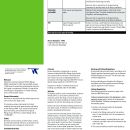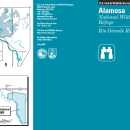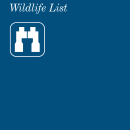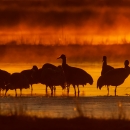Visit Us
Refuge Information
Alamosa Refuge and Visitor Center (physical and mailing address)
7824 El Rancho Lane
Alamosa, CO 81101
Alamosa Refuge is open one hour before sunrise to one hour after sunset for Refuge permitted activities.
Directions to the Alamosa Refuge Office and Visitor Center -- From the junction of Hwy 17 and 160, drive east on HWY 160 for about 3 miles to El Rancho Lane. Turn right onto El Rancho and drive about 3/4 of a mile to the Refuge HQ Office and Vistor Contact Station. The visitor contact station is open intermittently when staff and volunteers are available. For more information, call 719-589-4021 or email: alamosa@fws.gov.
Know before you go:
When you plan for a trip to the Refuge, wear sturdy shoes for hiking and dress for the weather. Bringing water, food, binoculars, field guides, a hat, sunscreen, insect repellent and anything else that might make the outdoor experience more enjoyable.
Areas throughout the Refuge are designated as closed year round to protect migrating waterfowl or for public safety. Maps of these areas are available at the Refuge visitor center kiosk and listed below.
Alamosa & Monte Vista Refuge General Brochure
Trails
There are 3 hiking trails available on the Alamosa National Wildlife Refuge. Each trail provide a unique experience of the surrounding landscapes and habitats found on or near the Refuge. Please stay on the marked trails. Do not venture on to game trails or closed areas of the refuge. When in doubt, contact refuge management for further guidance.
Rio Grande Nature Trail Seasonal Closure
A seasonal closure of the Rio Grande Nature Trail on Alamosa National Wildlife Refuge will be in effect starting 04/15/2024 through 09/1/2024 to protect the federally endangered southwestern willow flycatcher. We appreciate your cooperation in protecting this bird by complying with the seasonal closure. Signs at the trail head will indicate where public entry is prohibited. The reopening of the trail is expected when the nesting season is completed, on or about September 1, 2024.
For more information about the refuge, check out the Alamosa and Monte Vista Refuge General Brochure or the Rio Grande Natural Trail brochure or contact Refuge Biologist Scott Miller or Refuge Management at (719) 589-4021..
Related Documents
Other Facilities in the Complex
About the Complex
Alamosa, Monte Vista, and Baca National Wildlife Refuges are areas set aside for migratory birds and resident wildlife. The Refuges are now combined administratively into the San Luis Valley National Wildlife Refuge Complex. The 12,026 acre Alamosa Refuge includes wetland areas, riparian riparian
Definition of riparian habitat or riparian areas.
Learn more about riparian corridors, wet meadows, and river oxbows. The wetland and river habitats provide a wildlife oasis in this dry region. These habitats support a variety of wildlife, including songbirds, water birds, raptors, deer, beavers, coyotes, and more. The artificially created wetlands on the 14,804 acre Monte Vista Refuge are intensively managed to provide habitat for a wide variety of waterfowl and other water birds. Mallards, pintails, teals, and Canada geese are common, as are American avocets, killdeers, white-faced ibises, egrets, and herons. Irrigation canals and wells provide precious water to maintain this important wetland habitat. The 92,500 acre Baca Refuge is a highly diverse combination of shrublands, grasslands, wet meadows, playa wetlands, and riparian areas. This Refuge was set aside not only as another haven for migratory birds and resident wildlife, but also as an important piece in a broader conservation effort to protect the wildlife, habitat, and water of the north and east portions of the San Luis Valley. These three refuges of the San Luis Valley National Wildlife Refuge Complex contribute to over 560 refuges in the National Wildlife Refuge System – a network of lands set aside and managed by the U.S. Fish and Wildlife Service specifically for wildlife. The National Wildlife Refuge System is a living heritage, conserving wildlife and habitat for people today and generations to come.
Rules and Policies
Alamosa & Monte Vista Refuge General Brochure
- Refuge activities are permitted one hour before legal sunrise until one hour after legal sunset.
- The 3-mile Wildlife Drive is open year round to automobiles, foot travel, horseback, and bicycling, including e-bikes.
- The 4-mile out and back Rio Grande Nature Trail and 2-mile out and back Bluff Nature Trail are open to foot travel. Depending on snowfall, cross-country skiing and snow shoeing during winter months are permitted. Hikers and snowshoers are asked to be respectful of tracks set by skiers and hike to the side.
- The Rio Grande Nature Trail is seasonally closed from April 15th to September 1st to protect the southwestern willow flycatcher, a federally endangered bird, during the breeding season.
- Pets must be leashed, and their waste picked up.
- Please stay on main trail path's. Do not venture onto game trails or enter closed areas of the refuge. When in doubt, contact refuge management for further guidance.
Prohibited Activities
- Traveling off of designated trails or roads.
- Entering Closed Areas of the Refuge.
- Camping and Fires.
- Possession or consumption of alcohol while hunting.
- Possession of a controlled substance or drug paraphernalia while on all Federal property.
- Unmanned aircraft systems, including drones.
- Littering - including pet waste.
- Searching for or removing cultural artifacts, fossils, or animal parts, including antler sheds.
- Off-highway vehicles, such as snowmobiles, all-terrain vehicles (ATVs), or utility terrain vehicles (UTVs).
Fishing Regulations
- State fishing regulations and licensing apply to the Refuge fishing area.
- Fishing is only allowed within the designated fishing area. There are seasonal closure areas where fishing is closed from April 15th to September 1st to protect the southwestern willow flycatcher, a federally endangered bird, during the breeding season. For more information, see the Refuge's Hunting & Fishing brochure. Alamosa Refuge Hunting & Fishing Brochure
- Access to the fishing area must be from Parking Area #7 or from the Malm Trail. Do not trespass on private lands.
- All personal property, including fishing line, bait containers, and other trash must be removed at the end of each day.
Hunting Regulations
- Limited hunting is allowed on the Refuge in accordance with State regulations and Refuge specific regulations. Refer to the Refuge's Hunting & Fishing brochure for details. Alamosa Refuge Hunting & Fishing Brochure
Locations
From intersection of Highway 17 and Highway 160, go east 3 miles on Hwy 160 to El Rancho Ln. Turn south (right) and head down El Rancho Ln. for approximately 3/4 of a mile until you reach the SLVNWRC HQ Office.





